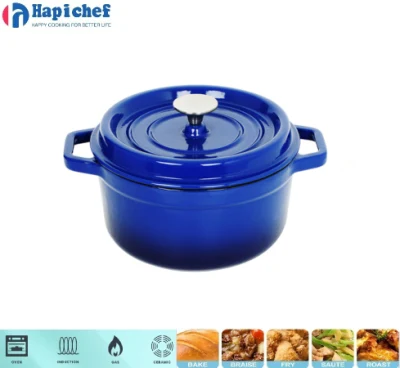Nonstick Cookware Sets
Quality and Durability: When shopping for nonstick cookware sets, quality and durability are perhaps the most important factors to consider. “The use of premium materials and craftsmanship ensures that the nonstick coating will last longer and resist scratches, peeling, and overall wear and tear from everyday use,” says Horn. Materials like stainless steel and hard anodized aluminum are known for being sturdy and long-lasting. Many cookware sets include lids made from tempered glass, which is also a high-quality and durable material. Lids may also be made from stainless steel.
It’s equally important to consider the way in which the cookware is made. For example, some high-quality sets have handles that are attached to the base with two sets of rivets, ensuring that they’re not only secure but easy to move while cooking. Sets like those are often scratch-resistant and metal-utensil-safe, adding an extra layer of durability to an already sturdy product.
Nonstick Coating: Not all nonstick coatings are created equal; it’s important to look for sets with a reputation for durability and scratch resistance to ones that have coatings free from potentially toxic PFAS and PFOA. There are a number of choices that include Teflon, also called PTFE; ceramic coating; and cast iron, among other types of nonstick coatings.
“Teflon was one of the first industrialized nonstick cooking pan surfaces, while more recently pan-makers have developed alternative industrialized non-stick cooking surfaces that include ceramic,” explains Mullin.
It’s important to consider what you prioritize most in a nonstick coating. For example, ceramic coatings are entirely toxin-free, but they’re not compatible with metal cooking utensils.
Variety of Pieces in the Set: Everyone has different cooking habits, so there’s no one-size-fits-all approach to building up a cookware set. Before investing in cookware, think about the frequency with which you’ll be using your cookware and what type of food you intend to make.
“A typical set of nonstick cookware usually includes anything from frying pans, saucepans, and other essentials,” says Horn. “The specific pieces may vary between brands.” For example, some sets may come with a wok, but not everyone needs a wok in their cookware arsenal, so it may be more beneficial to opt for a smaller and simpler set, saving you both space and money.
Cleaning and Maintenance: When choosing nonstick cookware, it’s important to pay close attention to the cleaning, care, and maintenance instructions provided by the manufacturer. Improper cleaning and care can damage your cookware and diminish its lifespan significantly.
Different materials and nonstick coatings call for different cleaning methods. “Traditional nonstick, i.e. cast iron and carbon steel, require gentle handwashing and a seasoning regimen,” says Mullin. Mullin recommends seasoning new cookware by heating it gently for roughly 30 seconds while simultaneously applying vegetable oil with a cloth to help establish a protective layer. “Industrialized nonstick coatings require gentle washing, but are generally dishwasher safe and should be stored with a barrier between pan layers if nested with other pans.”
Even though some nonstick cookware is said to be dishwasher-safe, “it’s best to hand wash your nonstick cookware with mild dish soap and warm water for the best cleaning and to maintain overall integrity,” Horn explains. “Avoid using abrasive sponges or scrubbers as they damage the nonstick coating.”
Budget: As you compare different brands and configurations of nonstick cookware sets, it’s important to consider your budget, keeping in mind that you don’t have to spend thousands of dollars to bring home a quality set. “The cost of nonstick cookware sets can vary dramatically depending on the brand, quality, and several other factors,” explains Horn. “Budget-friendly sets can be priced around $50 to $100 while more high-end sets go for $300 and even higher.”
More expensive sets are often made from more durable, longer-lasting materials. When weighing your options, consider the value of the long-term investment and the overall quality instead of focusing only on the sticker price. While cookware sets typically offer a better price than buying individual pieces of cookware, you don’t need to purchase an entire set if all you need is one frying pan or stock pot. Buying one high-quality piece that you’ll use frequently is a far better value than buying a lower-quality set that includes pieces you’ll rarely or never use.

